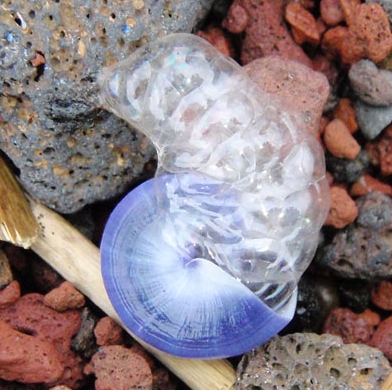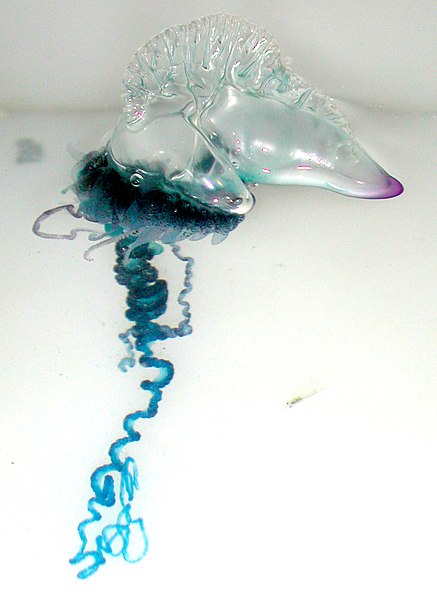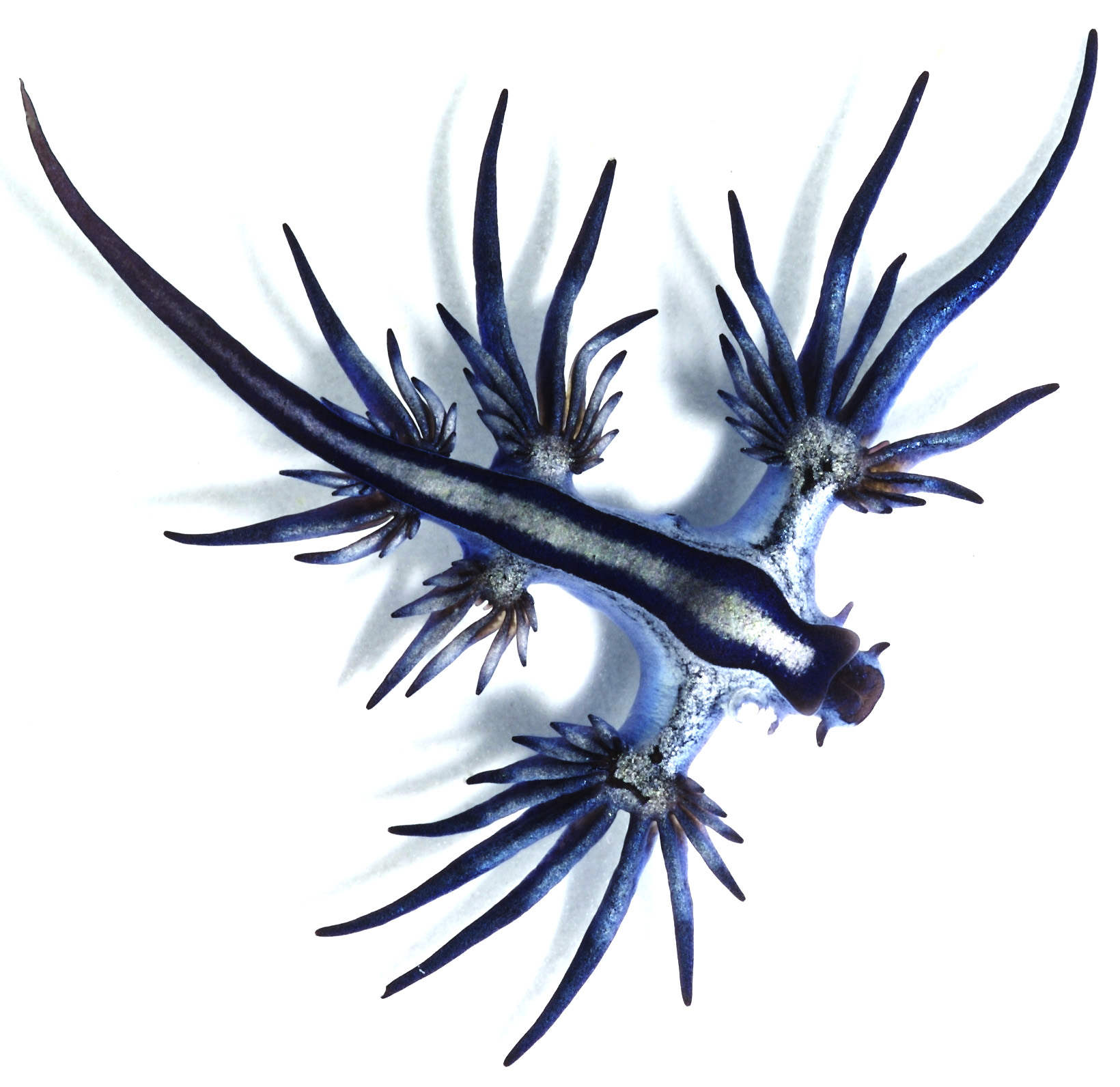
TAXONOMY: Kingdom: Animalia. Phylum: Mollusca. Class: Gastropoda. Superfamily: Epitonioidea. Family: Janthinidae. Genus: Janthina Species: Janthina janthina
DISTRIBUTION:
Cosmopolitan species living in temperate and tropical waters. Can be found in all oceans between 50ºS and 55ºN.
DESCRIPTION:
The shell and the exposed body are blue to violet, that is characteristic of the genus Janthina.The shell is dextral (rounds growing clockwise, see figure 2), Conical, with a flatten apex (top) See parts of a gastropod. Up to 4 whorls rounded-triangular.
 |
| Figure 2: Representation of the 2 possible chiralities. In the image, dextral at left; sinistral at right |
The shell surface is striated, sharp and regular in the first whorls and becoming fainter irregular striation as the whorl gets bigger.
It has no operculum in the adult form (trapdoor for the aperture present in many marine gastropods.
The adult cannot swim, while the veliger larvae (their first live stage) can.
 |
| Figure 3: Shells of Janthina janthina (From: Wikipedia) |
FEEDING:
The purlple snail feeds on Velella velella (figure 4) and Physalia physalis (figure 5), both floating hidrozoans (Medusae), the posion has no effect on the snail. It might feed also in J. pallida (another species from the same genus) and J. janthina (cannivalism).
 |
| Figure 4: Velella velella (from Wikipedia) |
 |
| Figure 5: Physalia physalis (from Wikipedia) |
The snail has predators as the nudibranch Glaucus atlanticus (Figure 6)
 |
| Figure 6: Glaucus atlanticus (from Wikipedia) |
REPRODUCTION:
The studies realized show that Janthina janthina starts its life as a male and at a certain point, the animal changes to female (protandric hermaphrodite is the scientific term).
They don't have copulatory organ in males nor storage of sperm in females. Differing from the other species of the same genus, J. janthina release the free swimming larvae instead of attaching the eggs to the parent's raft., that's why it is called viviparous.
The early veliger larvae has a cap-shaped shell, developing the dextral spiral coiled shell later in the same stage.
They develop and grow within the water column and then rise to the surface to make their first bubble raft.
SIZE:
Up to 39mm height and 40mm width.
COLOR:
Blue or violet.
No hay comentarios:
Publicar un comentario